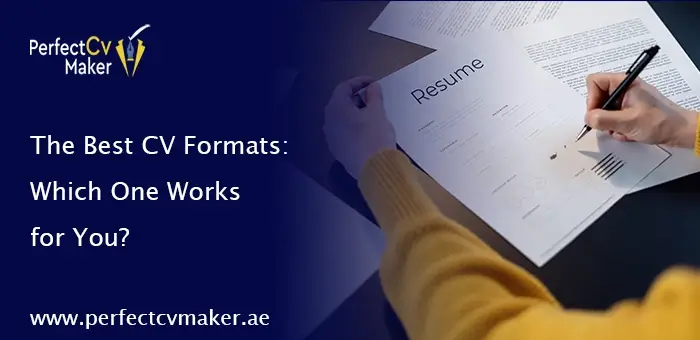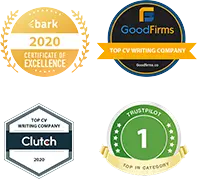83% of hiring managers say they’re more likely to onboard a candidate whose CV is well-formatted (Source: Jobvite).
A format plays a great role in landing your dream job. A resume format organizes the information in a compelling way and stands out in a competitive job market.
As a professional resume writer, I strongly emphasize good formatting and choosing the right format (chronological, functional, or combination).
So, let’s dive into this blog to find out different types of CV formats, their importance, and which one suits you the best.
Importance of a CV Format
“I have added all the necessary details to my CV, so why does the format matter?”
I’d think this and wonder if the hiring managers have everything that they are looking for in a CV. Then why is there so much emphasis on format?
First things first: You must know that before your CV reaches hiring managers (humans), it is scanned through an ATS (Applicant Tracking System). In addition, this software approves or rejects a CV based on its format, keyword placements, and experience.
Therefore, a resume format plays a significant role in landing a job.
Fact: 70% of the job applicants get rejected by ATS without being read.
Top 3 CV Formats: Select the Right One
| Reverse Chronological Format | Functional Format | Combination Format |
| This format is best suited for individuals with a consistent work history and a clear progression. | Job seekers with varied or limited, career changes, and gaps in employment, must choose this format | Perfect for job seekers who aim to highlight both work experience and skills. |
| Those who have worked in one or a similar industry and want to pursue the same field should opt for a reverse chronological format. | The functional CV format is suitable if you are applying for a role that emphasizes specific skills. | People who are career changers, have transferable skills, or varied non-linear career paths must pick a combination CV format. |
| Job seekers with minimal employment gaps must opt for this as it highlights the date/duration of work. | Best suited for fresh graduates or entry-level positions. | Senior professionals who are applying for a job role that requires skills. |
So, this was an overview of the three most common resume formats. In addition, read and know which one suits you best.
Now, we will discuss each of them in detail and also find out tips to work with them.
Reverse Chronological CV Format
Based on various surveys, it is said that more than 70% of job seekers submit their CVs using the reverse chronological format.
So yes, it is the most commonly used format, and even recruiters prefer this format the most.
In this CV format, the information is added from the most recent to the oldest. Hence, it helps the recruiters to know the recent achievements of the candidate and decide quickly.
And yes, this format is also beneficial because hiring managers only spend 7-8 seconds reviewing a resume. Thus, this format helps them know about you within those few minutes.
Functional CV Format
This format is best suited for those who prioritize skills over work experience. CV Makers often discourage this due to an unorganized structure. However, if your information suits you well, then you must go with it.
This resume format has skills which are divided into two categories (technical skills and soft skills). Moreover, the education section should also highlight relevant courses or training to land that specific job.
Combination CV Format
A combination resume format is a mixture of both chronological and functional formats. It represents a strong skill section with detailed work experience.
So, if you have a few years of work experience and skills, and want to apply for a higher-level position, this format is perfect for you.
How to Write a CV?
Yes, a CV is written using different formats. However, there are a few things that are common in every resume.
These are:
Name and Contact Information
The first and most important step is to write your name and contact details. Also, make sure that you are using updated information such as email, phone number, and home location.
A Compelling CV Headline
A good CV headline can be a great way to grab the attention of hiring managers. Therefore, make sure to choose the right vocabulary to describe your role.
This part is also like your personal statement, so ensure to make the most of it. In addition, try to pitch yourself within 2-4 sentences that can create an impact.
Work Experience
This is the most important and noticeable section in a CV. The best way is to list your work experience from most recent to oldest.
Each job role must include:
- Job title
- Company name
- Dates employed
- Achievements and responsibilities
Educational History
Now comes the educational history. To discuss this section, you must include:
- Degree name
- Name of the institute
- Location
- Dates attended
- CGPA (optional)
Skills
While most people don’t understand the importance of skills, this section plays a great role in landing a job. Also, make sure to list both technical and soft skills in your resume.
Technical skills: programming languages (like Java or Python), data analysis techniques, web development skills, and more.
Soft skills: communication, leadership, problem-solving, critical thinking, etc.
Final Words
The best CV formats that work best for most people are Reverse Chronological Format, Functional Format, and combination format. All of them have different plus points, which makes them the most used resume formats. But everyone should choose the format as per their profession, after evaluating all of them. Around 70% of the people who submit their CVs submit them in reverse chronological order, which makes it the most used and considered resume format. If you are confused about choosing the best format for yourself, then you should seek assistance or guidance from an expert.









